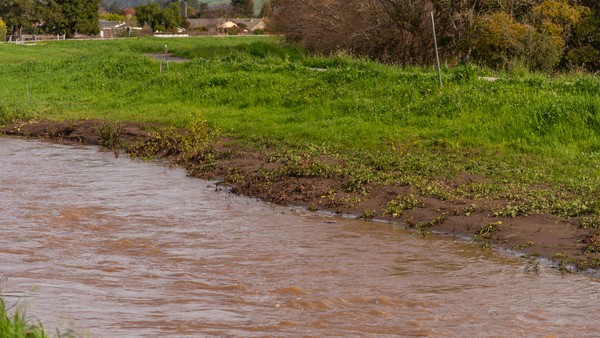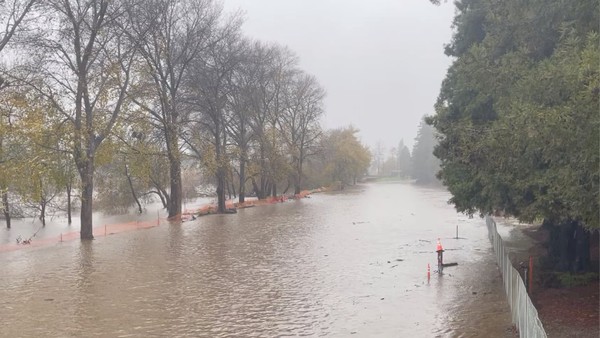As the atmospheric rivers flowed this past weekend, a flood of reporting came from local, statewide and even national news media. Santa Cruz County’s local news outlets stepped up, from daily Sentinel headlines to the magazine-style reporting pulled together by the team at Good Times. But one interesting story was published on Twitter.
A professor of environmental studies at San Jose State University, Dustin Mulvaney illustrated the history of the San Lorenzo River in series of posts. He begins the saga in 1791, when multiple floods finally drove Spanish occupiers to relocate to Mission Hill—on land where the ancestors of the Amah Mutsun Tribal Band had lived for thousands of years.
But subsequent settlers kept building in the San Lorenzo flood plain, and Mulvaney details the torrents that swept away bridges, houses and streets every decade until 1958, when the Army Corps began building levees and dams.
Those levees have more or less held in Santa Cruz, but that’s not always the case throughout the state. In an article headlined “Deadly results as dramatic climate whiplash causes California’s aging levees to fail,” three Los Angeles Times reporters look at California’s levee system. Pointing out that storm water “has a nasty way of finding errors in infrastructure planning and design,” geomorphologist Jeffrey Mount opines, “There are two kinds of levees: Those that have failed, and those that will fail.”
Though our levee systems and dams are aging, some technology is getting better. Mercury News reporter Lisa Krieger writes about stream gauges, linked to telecommunication lines and computers, that can guide public safety officials to where they will be needed. “We can tell first responders, with some certainty, that our gauges are saying it’s going to be a flood-prone area in one hour and 45 minutes,” Kevin Murray of the Palo Alto-based San Francisquito Creek Joint Powers Authority tells Krieger. “That gives them some time to get ahead of the disaster.”
Sacramento Bee reporter Ari Plachta took to the skies with the “hurricane hunters,” as the crew of the U.S. Air Force Reserve 53rd Weather Reconnaissance Squadron are known. Plachta writes, “Scientists have shown these flights can improve storm forecasts by 20%, a boon to both emergency preparations and reservoir managers aiming to keep water stores full but not flooded.”





